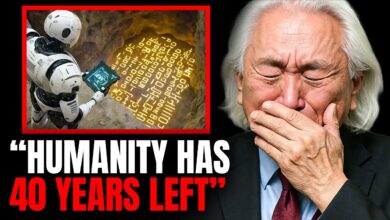King Solomon Mines Finally Discovered And It’s Not Good
The legend of King Solomon’s mines has been a subject of fascination for centuries, primarily due to the immense wealth described in the Bible. Solomon, renowned for his wisdom and wealth, reportedly received up to 25 tons of gold annually, with additional tribute from surrounding nations. This gold was believed to come from a series of mines, often referred to as “Solomon’s mines,” but their location has remained a mystery throughout history.
The earliest searches for these mines can be traced back to the Roman era, when Emperor Justinian sent emissaries in pursuit of the treasure. Later, during the Crusades, knights and explorers sought the fabled mines but found no definitive evidence. The 19th century saw further theories emerge, including those by German geologist Carl Malc, who suggested the ruins of Great Zimbabwe as the site of the mines, and British explorer Richard Burton, who posited they could be located in what is now Saudi Arabia.
In the 20th century, archaeological efforts focused on areas like the Timna Valley in Israel and the Arabah Valley, uncovering evidence of ancient copper mining operations that date back to Solomon’s era. However, no direct link to gold mining was found. These explorations suggested that while the wealth described in the Bible was likely real, it may have come from various trade routes and sources, rather than a single mining location.
Breakthroughs in Modern Archaeology
Recent archaeological discoveries have provided significant insights into the mystery of Solomon’s mines. Excavations in southwestern Saudi Arabia’s Mahad Dahab region have revealed advanced mining technologies that date back to the 10th century B.C.E., which aligns with the biblical timeline of Solomon’s reign. The discovery of gold artifacts in Jerusalem with chemical signatures matching those from Saudi Arabian mines further supports the theory that Solomon’s gold originated from this region. These findings suggest that Solomon’s wealth may have come from trade and mining operations in the Arabian Peninsula, rather than from a singular mine.
The Timna Valley and Copper Mining
In addition to the Saudi Arabian findings, the Timna Valley in Israel has yielded remarkable evidence of mining activity. Archaeological excavations, including those conducted by the University of Oxford, have uncovered large administrative complexes, luxury goods, and smelting furnaces, which support the idea that the region was under royal control during Solomon’s reign. Copper extraction tools and other mining evidence further suggest that Solomon’s wealth was not only due to gold but also to the valuable resources like copper that were crucial to his building projects, including the construction of the First Temple in Jerusalem.
The Role of Advanced Technologies
Technological advancements are playing a key role in uncovering new evidence related to ancient mining activities. Satellite imaging, lidar (light detection and ranging), and isotope analysis have all been used to discover new mining sites that align with Solomon’s era. For example, machine learning algorithms scanning satellite images recently uncovered 372 previously unknown ancient mining locations in just three months. These discoveries span across Africa, the Arabian Peninsula, and even parts of South America, providing more evidence of the extensive trade networks that existed during Solomon’s time.
Gold Trade and Southern Africa
A surprising and fascinating theory has emerged linking Solomon’s wealth with southern Africa, particularly the region of modern-day Zimbabwe. Recent carbon dating of mining tools and timbers from sites near Massvingo, Zimbabwe, indicates mining activity that coincides with Solomon’s era, dating between 970-930 BCE. Metallurgical analysis has confirmed that gold artifacts found in the Mediterranean, particularly in Israel, contain trace elements that match the gold deposits found in Zimbabwe.
This connection suggests that Solomon’s wealth may have been derived from gold sourced from southern Africa, which was then traded through Phoenician maritime routes to the Mediterranean. Evidence of Phoenician trade goods found along Africa’s eastern coast supports the theory of a thriving maritime trade route that connected southern Africa to the ancient Mediterranean world.
The Role of Textual Discoveries
In addition to archaeological evidence, new linguistic and textual discoveries have provided additional context to the story of Solomon’s wealth. Recent translations and reinterpretations of ancient inscriptions have shed light on the mining activities and trade agreements that took place during Solomon’s time. South Arabian inscriptions, for instance, document trade and gold tributes between northern kingdoms and local rulers, further corroborating the idea that Solomon was part of a larger trade network.
Technological Tools for Understanding Ancient Mining
One of the most significant contributions to this field is the use of advanced scientific methods such as lead isotope and trace element analysis. These techniques have allowed researchers to trace the origins of copper and gold found in ancient Jerusalem and Megiddo, revealing that the precious metals came from various sources across vast distances. These findings challenge the notion of a single mining location for Solomon’s wealth and suggest that his kingdom benefited from a complex system of trade and mining.
Additionally, DNA analysis has provided insights into the labor force employed in these mining operations. Studies of ancient worker remains have shown that laborers came from various neighboring kingdoms, aligning with biblical descriptions of Solomon employing workers from a wide range of regions. Pollen analysis has also been used to trace imported crops, further suggesting the logistical complexity required for such large-scale mining activities.
Conclusion: A Global Trade Network
In conclusion, the discovery of Solomon’s wealth and the legendary mines may not be tied to a single location but rather a network of mining operations spanning across Africa, the Arabian Peninsula, and the Mediterranean. The combination of technological advancements, archaeological findings, and textual discoveries is reshaping our understanding of ancient trade routes and the scale of commerce during Solomon’s reign. Rather than relying on a solitary source of gold, Solomon’s wealth likely came from a diverse and sophisticated system of mining and trade, involving distant regions such as southern Africa, Arabia, and beyond.
These findings not only support the biblical narrative but also reveal the remarkable extent of ancient commerce, suggesting that Solomon’s reign was part of a broader, globalized trade network that spanned continents and cultures.




